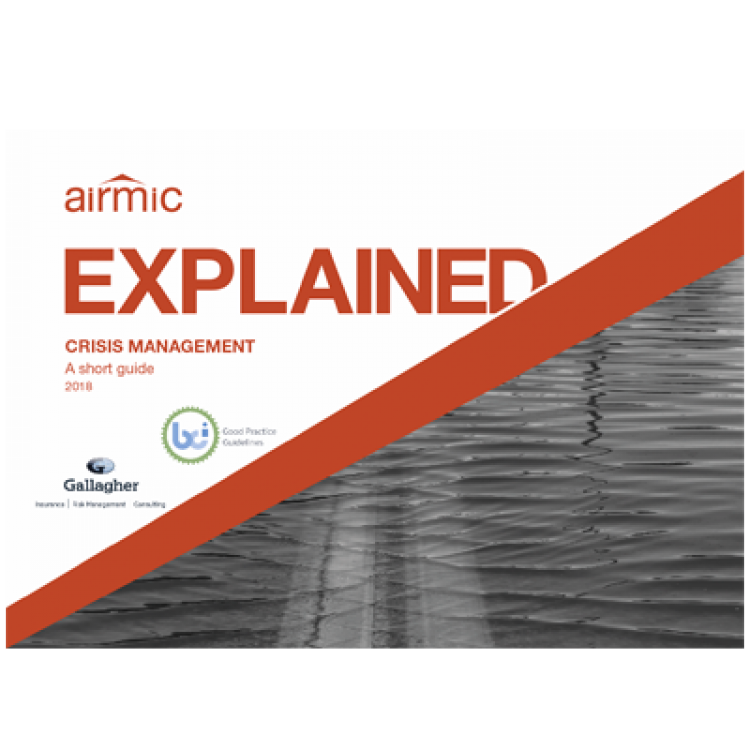New EXPLAINED guide tackles crisis management

The new Airmic EXPLAINED guide provides practical, step-by-step advice on how to reduce the risk of crises happening and turning things around if they do.
It is often not the crisis itself that leaves the organisation reeling, but an ineffective response to it, as the recent Oxfam scandal has demonstrated. Handling a crisis well can make all the difference between minimal damage - or perhaps none at all - and allowing an existential threat to develop to otherwise robust enterprise.
Increased reliance on technology, combined with the growing number and complexity of dependencies and both the speed and ferocity of social media make it imperative to respond rapidly and effectively. And the best time to prepare your response is before the crisis has even taken place.
The newly launched Airmic guide 'EXPLAINED - Crisis Management' provides a thorough and much needed review of how to respond to crises. The introduction sums up why it is such an important aspect of resilience:
"Risks are becoming more complex and more connected …events can happen anywhere, at any time. Threats, such as terrorism, political violence, kidnap and ransom, cyber risks or product recall can cause serious operational disruption, financial loss or adverse publicity that can impact your organisation and its profits. That's why it's important to understand crises and the steps you need to take to manage them."
The key to a successful crisis management plan is to start as early as possible and have a clear strategic direction including clear communication, effective leadership and a detailed record of all decisions taken.
The report, produced jointly with Gallagher who did much of the research, identifies four key pillars of crisis management: Anticipate, Prevent, Respond, Recover. In essence, you identify what might go wrong, reduce the chances of it happening but have plans in place in case it is necessary and the ability to recover once the crisis is over. Easy to say, but much more difficult to execute. The devil, as always, can be in the detail - and that is one reason why this guide is so useful. It provides practical measures to be taken under each heading.
A key aspect of crisis management is protecting reputation, which can be highly vulnerable, hard to restore and possibly the most valuable asset an organisation has. The damage that can be caused by social media and the ability of anyone to post pictures of events on-line mean that you must be able to respond rapidly at any time of day or night.
"Crisis management is a key component of risk management and resilience, which is why we produced this guide " said Airmic deputy CEO Julia Graham, who oversaw the guide's production. "I would like to thank Gallagher for their support and expertise in making it possible."
The guide, which is well illustrated with recent case histories, can be downloaded here.
The British Standards Institution defines crisis as an "abnormal and unstable situation that threatens the organizations strategic objectives, reputation or viability" and crisis management as "development and application of the organizational capability to deal with crisis".
